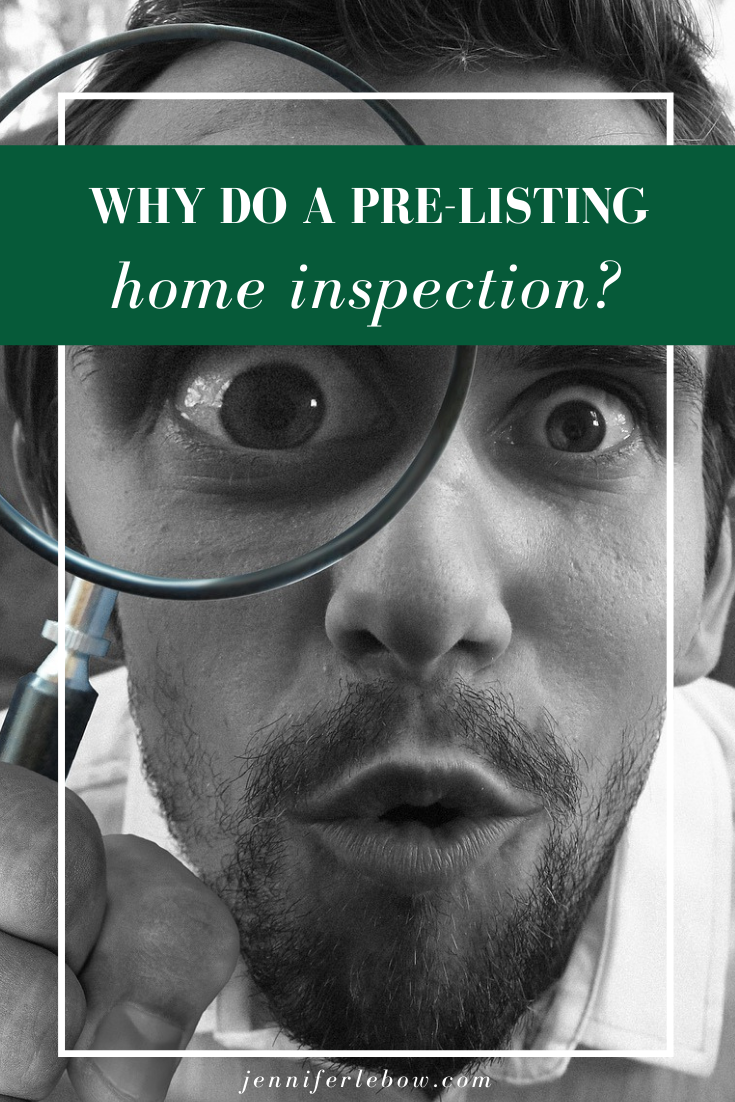
What is a pre-listing inspection?
A pre-listing inspection is a home inspection that a seller has completed prior to listing his or her home for sale. The seller can choose to just have a standard home inspection or can go the extra mile(s) with termite, radon, sewer scoping, etc. The inspection company provides a written report with photographs and recommendations for safety concerns and material defects. There will also be notes about systems requiring ongoing maintenance or items flagged as “budget to replace.”
What do I do with the reports?
Once you receive the reports, read them over and determine which problems you feel responsible for either repairing or providing a buyer a credit toward repairing. This step is certainly not always cut and dried and you may want to have specific tradespeople in to give you more information and price estimates. You should also discuss the results with your agent who can provide guidance for which repairs will be considered “necessary” by buyers and whether a credit makes more or less sense.
Once you decide, mark the report to reflect those repairs/credits you are willing to make. Then, disclose, disclose, disclose. What am I talking about? The seller’s disclosure. In Pennsylvania, this is a 10-page document that records the condition/age of most of your systems. Fill it out honestly and provide the inspection reports showing what was found and what you have committed to fixing.
Why do some people say a pre-listing inspection is a bad idea?
There are some people who discourage sellers from doing prelisting inspections for two reasons. The first is that, since you are legally required to disclose any safety or material defects, the concern is that you are giving them a list of “all the problems with the house”. They worry that buyers will be leery of buying a house that they know has some issues. The second reason is the argument that maybe you are wasting money fixing things that some buyers might not even ask for. Granted, if you plan to repair a leaky faucet in a bathroom that the new owner decides to replace immediately, yes, that could be money you might not have needed to spend. However, the benefits of the pre-listing inspection far outweigh the negatives.
Why a pre-listing inspection is smart
As far as drawing buyers’ attention to all the house’s faults up front, recognize that buyers will discover all of those things anyway, if they do their own inspection. Additionally, it demonstrates that you are not trying to hide anything, which, in home sales/purchases, is a common accusation. It promotes trust and can greatly affect the smoothness of the transaction.
Most important, many buyers who have access to a pre-listing inspection won’t bother to have their own inspection. As a result, the house sale is not at risk of falling through due to inspections. When a purchase “falls apart on inspections”, people assume there was something wrong with the house and subsequent offers are usually lower. Equally valuable, if a buyer foregoes an inspection, there will not be any renegotiation down the line due to requested repairs or credits. It means that the amount of the offer is actually the amount you’ll be paid for the house. Sometimes there can be ugly surprises and credits into the tens of thousands–wouldn’t you rather know ahead of time so you are confident that what a buyer says he/she will pay for the house won’t change once the agreement is signed?


Leave a Reply